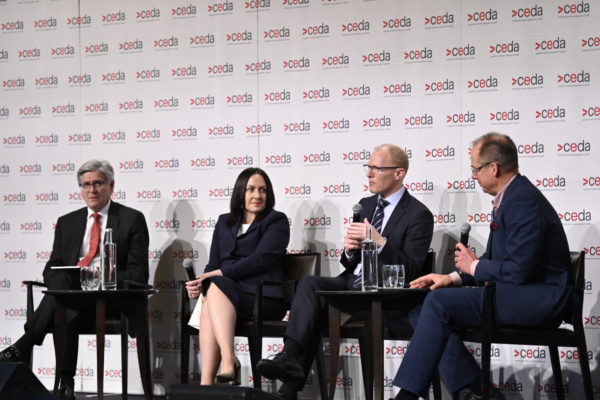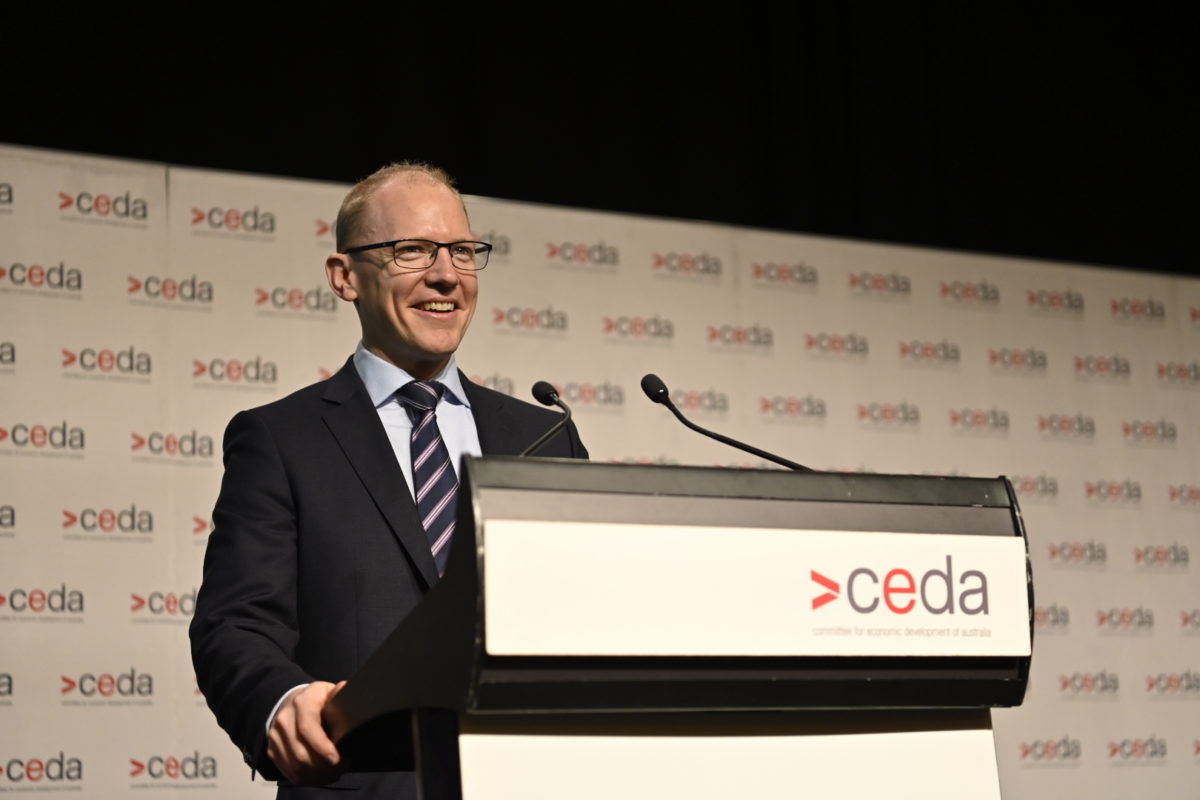Australia’s grid needs to be capable of handling 100% renewable energy penetrations at any given time, the new CEO of the Australian Energy Market Operator (AEMO), Daniel Westerman, told audiences in Melbourne.
Westerman’s prepared speech grabbed media attention before it was even delivered today with its provocative target. Westerman was, however, keen to clarify what he’s aiming for – which he noted is not quite what’s been reported.
“I’m not saying Australia is going to run at 100% renewable energy for the entire year of 2025, nor am I asking for policy intervention or otherwise,” Westerman clarified during the Q&A part of the event hosted by the Committee for Economic Development of Australia (CEDA).

Committee for Economic Development of Australia (CEDA)
“The goal I’m setting for us, Australia’s independent system operator, is to harness the talent, capabilities, experience and know-how across the industry to engineer grids that are capable of running at 100% instantaneous renewables penetration and to do this by 2025.”
The key word here is instantaneous, which means the grid can remain stable while powered fully by renewables at any single moment in time, rather than all the time.
“Right now, we are seeing everyday our control rooms grapple with very high and very low periods of instantaneous renewables penetration,” Westerman said.
“Our job is to operate a safe, secure, reliable and affordable energy system, so we need to be in a position where we can manage 100% instantaneous penetration of renewables. That is what our forecasting tell us.”
“This must be our goal, not because of personal ambition or politics or ideology, but because we know this is where we’re headed,” Westerman added.
Why Westerman has upped the anti: ‘constraining off zero-cost renewables is probably not the right thing’
Per capita, Australia installs renewables at ten times the rate of the global average. “This pace of change is actually well ahead of our own planning scenarios,” Westerman said, referring to AEMO’s ‘step change’ scenario, which was, until not long ago, actually considered Australia most ambitious decarbonisation route.
The dizzying rate of renewable installations has meant Australian electricity networks and market operators have increasingly been constraining variable assets like rooftop solar, wind farms and utility-scale solar farms. That is, they’ve limited how much clean electricity these renewable resources are allowed to export onto the grid.
Westerman doesn’t seem to be particularly fond of this practice, which is why he wants to ready the country’s grids to be able to handle 100% instantaneous renewables penetrations.
“If we’re not in that position, we’re going to be constraining off zero-cost energy for consumers, and I don’t think that’s the right thing,” he said. “We have to be in a position where that is allowed onto the market.”
Instead of imposing constraints, Westernman plans to move forward with that he called a ‘tiered approach’ in which curtailment of renewable assets like rooftop solar would be an absolute last resort.
“The goal for us at AEMO is to harness the talents, capabilities, and experience across the industry, to engineer grids that are capable of running at 100% instantaneous penetration of renewable energy by 2025.” – @AEMO_Media CEO @dfwesterman #energyfuture pic.twitter.com/t2CsU5pRRc
— CEDA (@ceda_news) July 14, 2021
Australia’s Smart Energy Council has welcomed the pivot. “AEMO has previously championed controlling household solar, something strongly opposed by the Smart Energy Council,” CEO John Grimes said.
“AEMO’s new tiered approach to managing minimum system load is supported in principle, acknowledging there is a lot of work still to be done to ensure Australia makes the best use of abundant solar during the middle of the day,” he added.
‘Kaleidoscope’ of challenges
Until today, AEMO’s public goal was for Australia’s grid to be able to cope with 75% renewable penetrations at any one time. Taking the leap into this final quarter and ultimately transitioning Australia’s energy system, Westerman said, involves a “kaleidoscope” of challenges.
“The challenges are too big for any one person or one organisation to solve,” he said.
“The answer of how we get from 75% to 100% is that we have to harness the talent and capabilities not just at AEMO but across the industry. We have to work collaboratively, find solutions,” Westerman added.
Innovation is also key, according to Westerman, who pointed to retired thermal power stations which are now simply spin their rotors without actually burning coal and thereby providing inertia to the grid, stabilising it.
"Cheap, decarbonised energy … can be the stimulus for industries of tomorrow, powering the economic growth needed to demolish debt accumulated from the COVID pandemic." – AEMO CEO @dfwesterman#EnergyFuture pic.twitter.com/UZlHip9L50
— CEDA (@ceda_news) July 14, 2021
‘Front of the pack for renewables penetration’
Despite the hurdles, Westerman painted an inspiring picture of Australia’s renewables journey, pointing out that since 2012, more than 90 cents of every dollar invested in energy generation in Australia has gone towards solar and wind.
Currently, around 55 GW of projects are proposed on east coast of Australia alone. “It’s almost as much generation capacity as exists today,” he said.
Westerman also pointed out that Australia’s grid has already proven it get accomodate impressive penetrations of renewables, with the AEMO chief noting there are already instances when renewables contribute to more than half of eastern Australia’s electricity supply, up from peaks of 38% in 2018.
“In WA, we’ve reach 65%,” he added, before turning to renewables superstar South Australia – which, last year on October 11, was entirely powered by renewable energy for one hour. A feat Westernman described as “stunning”.
His ambition is to get Australia to a place where such days are not outliers, but regular occurrences.
“That is not decades away, it’s just a few years time and it’s unchartered territory for any large independent grid anywhere in the world.”
New AEMO
Alongside new commitments for Australia’s grid, Westerman also shared his new vision for AEMO itself, for which he become head in May. During the event, he committed AEMO to “greater transparency” and “collaboration”.
Alongside the clear top priority of the market operator, which is planning and integrating Australia’s energy systems, Westerman said his next two priorities involved shifting how AEMO interacts and engages with its stakeholders and “evolving” how AEMO manages itself as an organisation.
It was an honour to deliver the keynote speech at today’s @CEDA_news event, sharing ‘the view from the control room’ on Australia’s energy transformation. You can read the full speech here: https://t.co/cERBta2gD3 pic.twitter.com/Zy7nPtpheF
— Daniel Westerman (@dfwesterman) July 14, 2021
This content is protected by copyright and may not be reused. If you want to cooperate with us and would like to reuse some of our content, please contact: editors@pv-magazine.com.









Finally , some-one with a realistic vision of the job ahead and an urgency to address the near term future of energy generation .
Have you any political ambitions ??…. no best to stay where you are rather than join the Canberra Clowns.